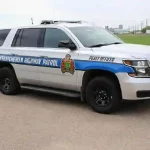Manitoba’s Wildlife and Road Safety – Tips for Drivers
Manitoba’s diverse landscapes, from expansive forests to serene lakeshores, are home to a rich array of wildlife. While the province’s natural beauty is a marvel to behold, it also presents unique challenges for drivers. Encounters with wildlife on the road can be unexpected and potentially hazardous. In this Trubicars guide, we’ll provide you with essential tips and insights on how to navigate Manitoba’s roads safely while sharing them with the province’s wildlife inhabitants.
The Wildlife Diversity of Manitoba
Manitoba is a haven for wildlife enthusiasts and a sanctuary for numerous species. Some of the wildlife you might encounter on the roads include:
- Moose: These majestic creatures are particularly abundant in the province and can be quite large, posing a significant risk to drivers in collisions.
- Deer: White-tailed deer are prevalent in Manitoba, especially in wooded and rural areas.
- Bears: Manitoba is home to both black bears and polar bears, depending on the region.
- Coyotes: These adaptable predators can be found in various habitats.
- Birds: Manitoba offers excellent birdwatching opportunities, with various species often seen near water bodies.
Understanding the Risks
Collisions between vehicles and wildlife can result in property damage, injuries, or even fatalities. To mitigate these risks, it’s crucial to understand why wildlife often comes into contact with roads:
- Habitat Fragmentation: Roads can divide natural habitats, making it necessary for wildlife to cross them in search of food, water, or mating opportunities.
- Migration Routes: Some species follow seasonal migration routes that intersect with roads.
- Salt and Vegetation: Roadsides often feature salt deposits and vegetation that attract wildlife.
- Visibility: Wildlife may be difficult to spot due to low light conditions during dawn or dusk.
Safety Tips for Drivers
- Stay Informed: Be aware of the types of wildlife prevalent in the areas you are traveling through and the times when they are most active.
- Reduce Speed: Reduce your speed, especially when driving through areas known for wildlife activity. Slower speeds provide you with more reaction time.
- Use High Beams: Use high-beam headlights, where appropriate, to improve your visibility during nighttime driving. However, dim your lights when other vehicles are approaching to avoid blinding drivers.
- Stay Alert at Dawn and Dusk: Wildlife is often more active during dawn and dusk. Exercise extra caution during these times.
- Watch for Signs: Pay attention to road signs indicating areas where wildlife crossings are common. These signs often include images of specific animals to watch for.
- Scan the Roadside: Continuously scan the roadside for any movement or the reflection of eyes. Remember that animals may suddenly dart onto the road.
- Don’t Swerve: If you encounter wildlife on the road, resist the urge to swerve. Instead, apply your brakes steadily and maintain your lane.
- Keep a Safe Following Distance: Maintain a safe following distance from the vehicle in front of you. This allows you more time to react if the driver suddenly brakes to avoid wildlife
- Honk Your Horn: If you see wildlife on or near the road, honk your horn to alert them and encourage them to move away from the road.
- Use Wildlife Underpasses: In areas with known wildlife crossings, be vigilant for wildlife underpasses or overpasses designed to allow animals to pass safely under or over the road.
- Report Collisions: If you do collide with wildlife, report the incident to local authorities, especially if the animal is injured and requires assistance.
Wildlife Encounters: What to Do?
In the event of a wildlife encounter, it’s essential to prioritize safety for both you and the animals:
- Remain Calm: Stay calm and avoid sudden movements that may startle the animal.
- Do Not Approach: Never approach or attempt to touch wildlife, especially if they appear injured or distressed.
- Call for Help: If you encounter a seriously injured animal, contact local wildlife authorities or animal rescue organizations for assistance.
Manitoba’s roads are a gateway to its natural wonders, but they also require a heightened level of awareness due to the presence of diverse wildlife. By following these safety tips and respecting the province’s wildlife, you can enjoy the beauty of Manitoba while minimizing the risks associated with driving in areas where animals roam freely. Remember that wildlife encounters can be unpredictable, so always prioritize safety and responsible driving practices. Safe travels through Manitoba’s captivating landscapes!


 February 13, 2024 by
February 13, 2024 by Reema Sharma
Reema Sharma
 January 17, 2024 by
January 17, 2024 by Trubicars
Trubicars
 January 17, 2024 by
January 17, 2024 by Trubicars
Trubicars
